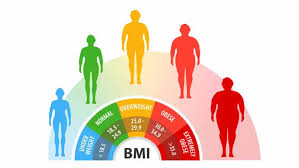A recent study presented at the European Congress on Obesity (ECO) suggests that a lower BMI cutoff (≥ 27) might be more appropriate for diagnosing obesity in middle-aged and older adults compared to the conventional BMI threshold of ≥ 30. Conducted by researchers from the University of Rome Tor Vergata, University of Modena and Reggio Emilia, and Beirut Arab University, the study highlights the limitations of using BMI alone as a measure of obesity.
The research team, led by Dr. Marwan El Ghoch, PhD, from the University of Modena and Reggio Emilia, compared the World Health Organization’s (WHO) traditional BMI classification with adiposity levels in Italians aged 40-80 years. Presenting the findings, El Ghoch emphasized the importance of considering body composition along with BMI. “BMI can be a useful screening tool, but understanding the body composition of fat and muscle is crucial,” he noted.
The study involved 4,800 participants, categorized by BMI and body fat percentage measured via dual-energy x-ray absorptiometry (DXA). The results revealed that while 38% of men and 41% of women were classified as obese based on the traditional BMI threshold, 71% of men and 64% of women were considered obese when body fat percentage was used.
El Ghoch and his colleagues propose a BMI cutoff of 27 for diagnosing obesity in individuals over 40, which could improve the accuracy of obesity diagnosis in this age group. “We recommend this new cutoff point be applied in clinical settings when screening individuals for obesity in Italy,” El Ghoch stated.
BMI Limitations and Body Composition
The study underscores the limitations of BMI, which does not differentiate between muscle and fat mass and fails to account for changes in body composition with age. Dr. Luca Busetto, an obesity specialist from the University of Padova, commented on the findings, highlighting the risk of missing individuals with high fat mass but a BMI below 30. “These individuals have the same risk of developing chronic diseases as those with higher BMI,” he said, advocating for additional measures like waist circumference and waist-to-height ratio.
Implications for Clinical Practice
The research suggests that relying solely on BMI could lead to underdiagnosis of obesity-related health risks. Dr. Francesco Rubino from King’s College London emphasized the need for diagnostic criteria that reflect both current health status and future disease risk. He pointed out that understanding changes in fat and lean mass distribution is essential for health in later life.
In conclusion, the study advocates for a more nuanced approach to diagnosing obesity in middle-aged and older adults, incorporating both BMI and measures of body composition. This approach could enhance the identification of individuals at risk for obesity-related diseases and improve intervention strategies.












